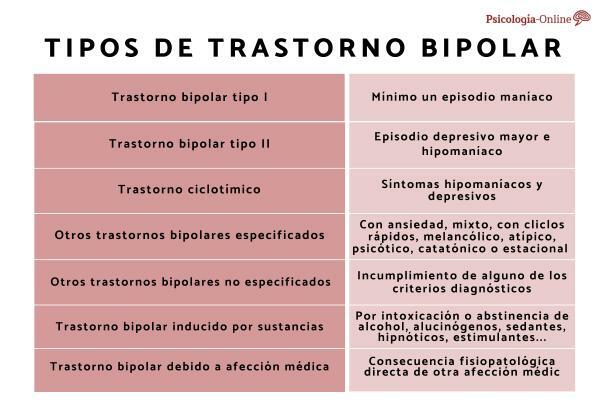For Carlos Salavera Bordás. March 2, 2018

In this work, an attempt will be made to analyze the language used by schizophrenics and its repercussions for communicating with each other and between them and society. In your day-to-day work with people who suffer from schizophrenia, one of the problems you notice is the difficulty in having a conversation that is no longer coherent with them, but intelligible. In most cases, it is very difficult for us to communicate with them, which leads to the following hypotheses: We It is difficult for us to communicate It is difficult for them to express themselves correctly We do not connect linguistically therapists and patients; it is what in the street we would say that "we are not on the same wavelength. First we will make an analysis of the distortions that occur at the level of language in this population and then we will propose a program that encourages, encourages and corrects "schizophrenic speech".
In this PsychologyOnline article, we will talk about language in schizophrenia: Pathologies.
When we look at the speech of schizophrenics, we denote some deficiencies and some excesses, but above all what is seen is the deterioration of the speech and the difficulty they have to communicate in a coherent way for the interlocutor and that he understands them, it is possible to speak of a disaggregated language, with serious semantic alterations above all, but with a syntax poor.
If we analyze the non-verbal components involved in interpersonal communication in the schizophrenic we have to:
- the facial expression is completely inexpressive, with very frequent negative expressions and not communicating anything on other occasions.
- the gazes are often lost in infinity, without any visual contact with the interlocutor in front of them, causing a negative impression.
- the smile is always inadequate, with frequent unmotivated laughter, the cause of the delirium that is speaking to them at the same time as the interlocutor.
- the posture stands out for its motor rigidity, with positions that we can hardly consider as comfortable, giving an impression of a total rejection of the speaker.
- orientation does not exist, they do not direct their body and their gaze to the interlocutor
- distance and physical contact have two extremes: the invasive, occupying the so-called vital space of the interlocutor, in a distance extremely close and intimate, very unpleasant and remote, with continuous allusions to the long-distance receiver, with a distancing total.
- the gestures are non-existent, the hands remain immobile, a reflection of their apathy and often more in response to their internal "voices" than as a reinforcement of what they want to communicate to us.
- the personal appearance is very unpleasant, without any attractiveness and is deficient with a certain degree of sloppiness and lack of basic self-care.
- the opportunity to reinforce others does not occur at any time, with no gratification to the partner and sometimes that one formulates is out of place.
When we look at what would make up the paralinguistic components:
- the volume of the voice is minimal, they can hardly be heard, they do not use a suitable volume for the interlocutor, decreasing the volume the greater the length of the message.
- the intonation is flat, monotonous and boring, there is no accompaniment to the message delivered.
- the timbre is either very high-pitched or very low.
- fluency does not occur, there is no continuity in the discourse, there are many disturbances or embarrassing pauses, there is no accompaniment, once the sentence is concluded, the topic and the conversation, having to make use of interrogative phrases to continue or comment on another topic, which concludes when he answers, on many occasions with monosyllables.
- speed has two possibilities, depending on the degree of cognitive impairment of the patient and his type of disease, on the one hand we would have people with very slow speech, they speak extremely slowly and for other people with logorrhea, who speak extremely fast and are not understand nothing.
- clarity is confusing, having to continually ask for clarifications about the neologisms used and the meaning they want to give to the phrase.
- the speaking time is short, with long periods of silence, concluding with the answer to what is asked.
When we enter the verbal components properly said we see that:
- the content is very uninteresting, boring and very little varied, often being delusional, which makes it difficult for the interlocutor to understand.
- the notes of humor throughout the conversation are scarce, with a very serious content in his speech.
- Personal attention is something that does not exist for them, they are never interested in the other person, and it is also something that is difficult for them to maintain, with continuous requirements for it.
- the questions when they exist are short, general when they want to express something particular and very specific when in reality they want to ask a general question, on the other pole we have people who never ask questions or in very rare occasions.
- The answers to questions are monosyllabic and not very adequate, without elaborating on the answer, having to ask several questions to arrive at an answer that in another type of population would suffice with a single question.
One of the characteristics of schizophrenic patients and their illness is social isolation, that along with apathy and inattention, is what Andreasen calls negative symptoms of disease.
Also, psychotics use correct syntax, but their semantics are sometimes illogical, in fact, although their abilities lexical, morphological, phonological, syntactic and other related capacities do not seem to be diminished, this is not the case in the field of semantics.
As Belinchon (1988) points out, there are three types of clinical observations:
- That the speech of schizophrenics is not very fluent and occasionally shows prosodic alterations that affect intonation and speed.
- That schizophrenic language is perseverative
- That schizophrenic language is unintelligible, incoherent and / or difficult to understand by the interlocutor.
It goes without saying that this set of characteristics are neither exclusive to schizophrenia, nor are they present in all cases, nor do they all coincide together.
Schizophrenics can use language appropriately, but cannot communicate good because they do not take into account their interlocutors and their informational needs. The performance of the schizophrenic when the number of verbal elements is greater than three or four, drastically worsens. There is an excess of monologues in this type of patients, this would lead us to point out that the speech is poor, that it costs a great effort on the part of the patient. interlocutor-receiver to achieve links between the sentences that give consistency to the conversation, that the number of spontaneous comments is minimal, which forces the receiver to force the conversation at all times to give it a continuity that is not always achieved, not to mention how complicated it is for this population changes the subject in the middle of the speech, representing great difficulty the traditional methods used for this purpose of changing the subject: to the thread and in leaps.
When a schizophrenic acts as an issuer, he finds it very difficult to provide information that allows him to identify a single referent.
The descriptions provided are inadequate for the listener's needs regarding the task to be performed, and the receiver-based design is flawed.
If we consult some authors such as Andreasen and Chaika, we see their lists of distortions in the language of the schizophrenics, which agrees with those detected in practice and in the reviews carried out for this job.

This article is merely informative, in Psychology-Online we do not have the power to make a diagnosis or recommend a treatment. We invite you to go to a psychologist to treat your particular case.


